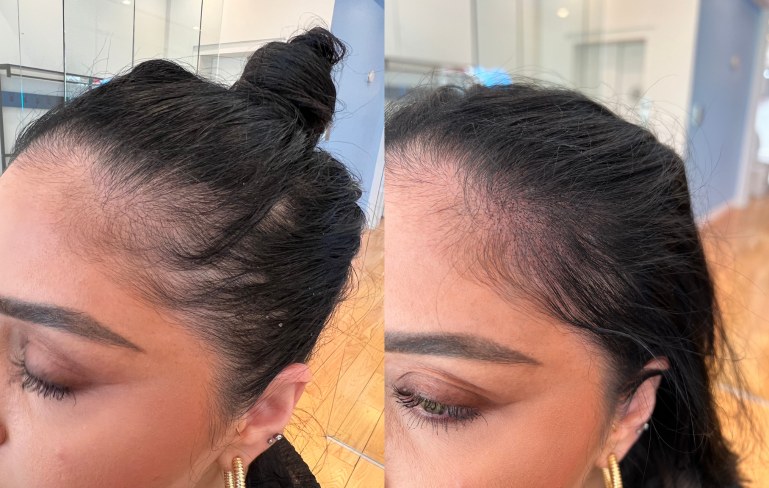Hair Thinning and Balding in Women: Potential Causes and Treatment Options

Baldness and thinning hair affect both men and women. Understanding the cause of hair loss may help some women reverse the issue or prevent it from getting worse. Various treatment options are available, including scalp micropigmentation offered by Scalp Micro USA.
Why Are You Losing Your Hair?
Hair loss often occurs as a natural byproduct of aging for both men and women. According to the National Library of Medicine, 40% of women could experience hair loss by age 50. Here are a few of the common causes of baldness or thinning hair in women:
Alopecia
A common term for female pattern hair loss (FPHL) is “alopecia.” While alopecia is often more closely associated with hair loss in women than in men, the word itself describes hair loss in both sexes. The word may seem like an umbrella term (encompassing all types of baldness), yet there are several distinct forms of alopecia.
Two common types of alopecia exist in women: androgenetic and areata. Androgenetic alopecia is more commonly known as “female pattern baldness.” A hereditary condition, androgenetic alopecia manifests differently in women than in men. Male pattern baldness is often associated with either a receding hairline or the loss of all a man’s hair; in women, it often results in patches of thinning hair throughout the scalp.
Areata alopecia describes an autoimmune condition in which the immune system incorrectly attacks healthy hair follicles. The effects are two-fold: the hair in the compromised follicles falls out, and then due to the damage, new hair often does not grow back. Women dealing with areata alopecia are more likely to experience complete hair loss than those with female pattern baldness.
Other Medical Issues
A number of other medical causes of hair loss in women exist. Skin disorders such as dermatitis, psoriasis, and cellulitis contribute to balding and thinning hair, along with certain medications. Hormonal imbalances accompanying pregnancy or menopause might also result in women losing their hair.
Behavioral Causes
Female baldness or hair thinning might also be due to certain behaviors. Your daily hair care routine could hasten its decline. While hair treatments help improve aesthetics, their frequency often leads to scalp damage. The same can be said about the constant use of styling tools that stress the hair (such as irons or straighteners). A lack of protein, certain vitamins, and key nutrients in your diet also hastens hair loss. Stress is another common cause of hair thinning and baldness.
What Can You Do About It?
Advances in the field of hair restoration now provide several methods for combating encroaching hair loss. Understanding which works best for you helps to halt its progress before the issue becomes pervasive. The list below describes these treatments in greater detail:
Lifestyle Changes
Avoiding frequent salon treatments may help; regular washings with a mild shampoo protects your hair (the Cleveland Clinic recommends products without sulfate detergents). Adding a standard multivitamin or vitamin D supplement to your diet might also help. So too can dealing with your stress by seeing a mental health professional or through better management of other health conditions.
Medical Treatments
Medical intervention is another option. Hair restoration medications like minoxidil are available over the counter. Prescribed medications to treat female hair loss include estrogen and steroids, along with specific drugs such as finasteride and spironolactone. Platelet-rich plasma (PRP) injections into the scalp, red light therapy (stimulation of epidermal stem cells with lasers), and hair transplant surgery are other options.
Scalp Micropigmentation
A cost-effective, long-lasting, and visually appealing alternative to these is scalp micropigmentation (SMP). It involves placing pigment in the scalp to create the appearance of hair follicles. In a series of short, 2-4 hour sessions, an SMP artist can create a healthy-looking hairline whose results last as long as 4-6 years. The pigment solution does not wash off and can be easily maintained throughout its life cycle through the use of moisturizers and other practices as recommended by an SMP artist.
SMP serves as an effective way to mitigate hair loss in women by covering up thinning patches on the scalp or replacing old styles with a bold, modern new look. Artists use natural tones, making the results difficult to distinguish from natural hair follicles. Men have viewed it as a preferred method of dealing with hair loss for years; women can now also turn to it as a treatment for baldness or thinning hair.
Seek Reliable Hair Loss Treatments
Whether you’re looking to compensate for complete hair loss or simply to disguise patches of thinning hair, the scalp micropigmentation here at Scalp Micro USA offers you an effective option. With offices in Chicago, Fort Lauderdale, Los Angeles, New York, and two Texas locations in Austin and Houston, we have practitioners close at hand ready to serve you. Contact us today to schedule your initial consultation.

Tired of hair loss?
Get the perfect hairline, 100% guaranteed, with our scalp
micropigmentation treatment that is customized just for you. No more
crazy combovers. No more ineffective medications. Just results.